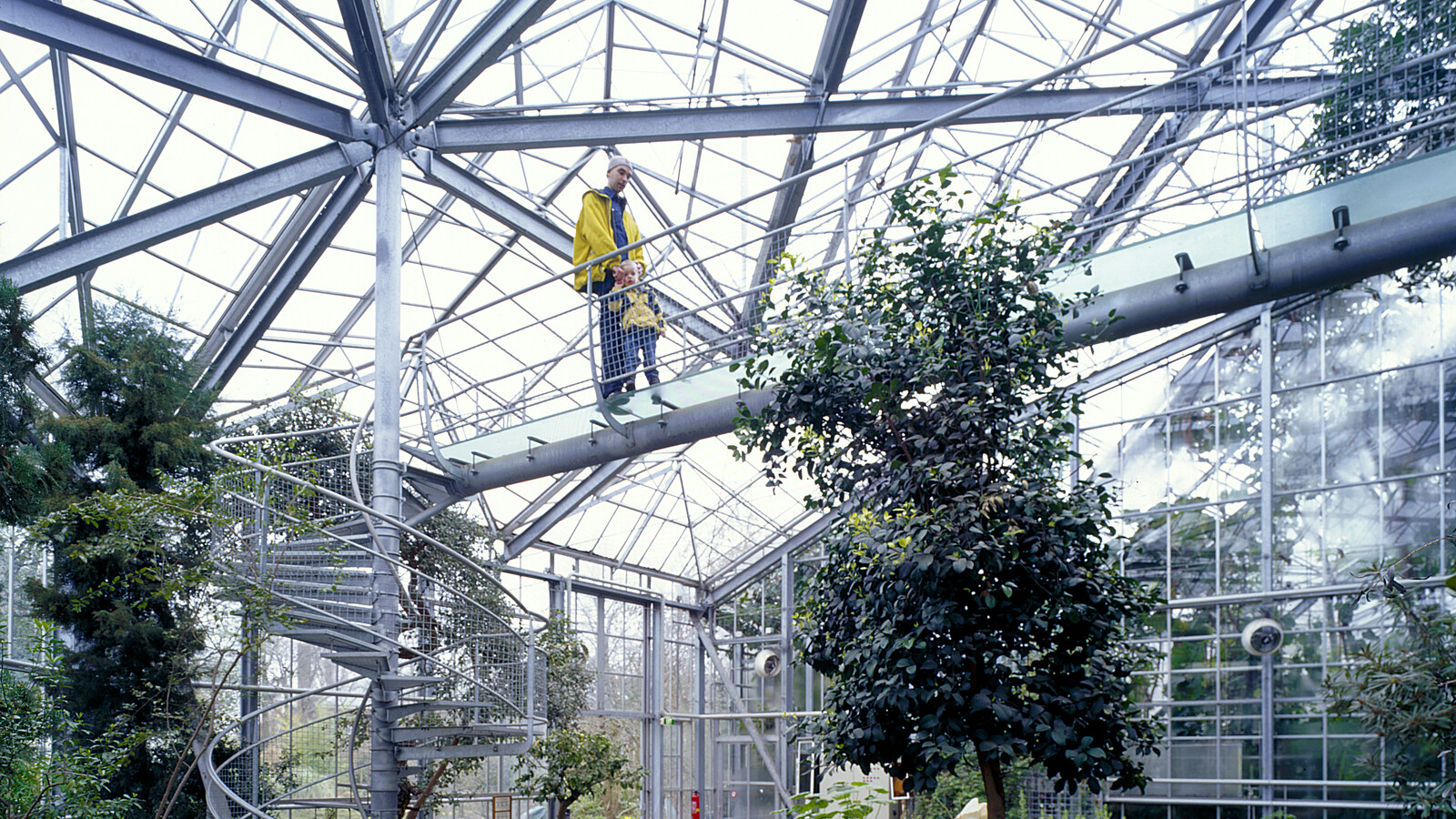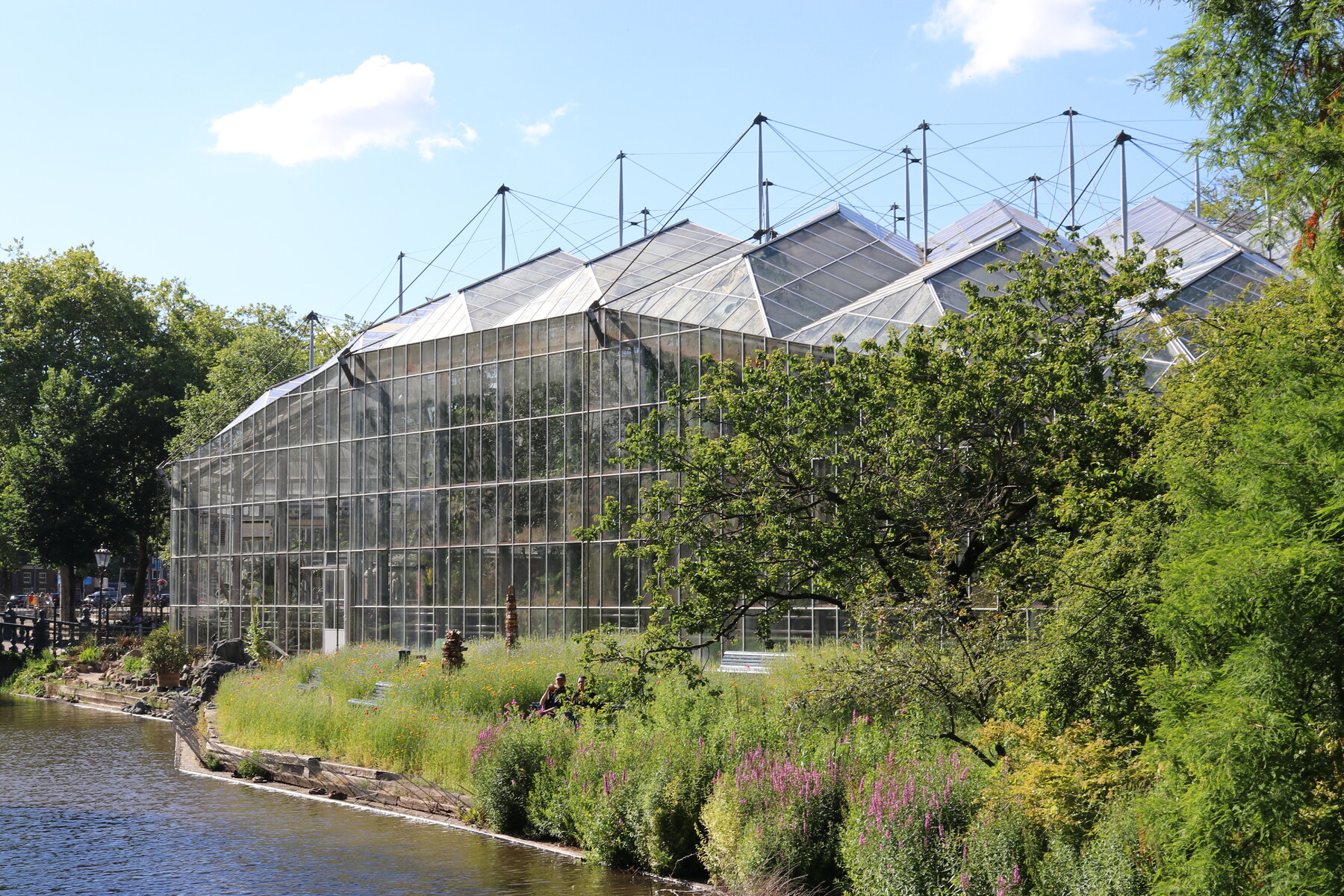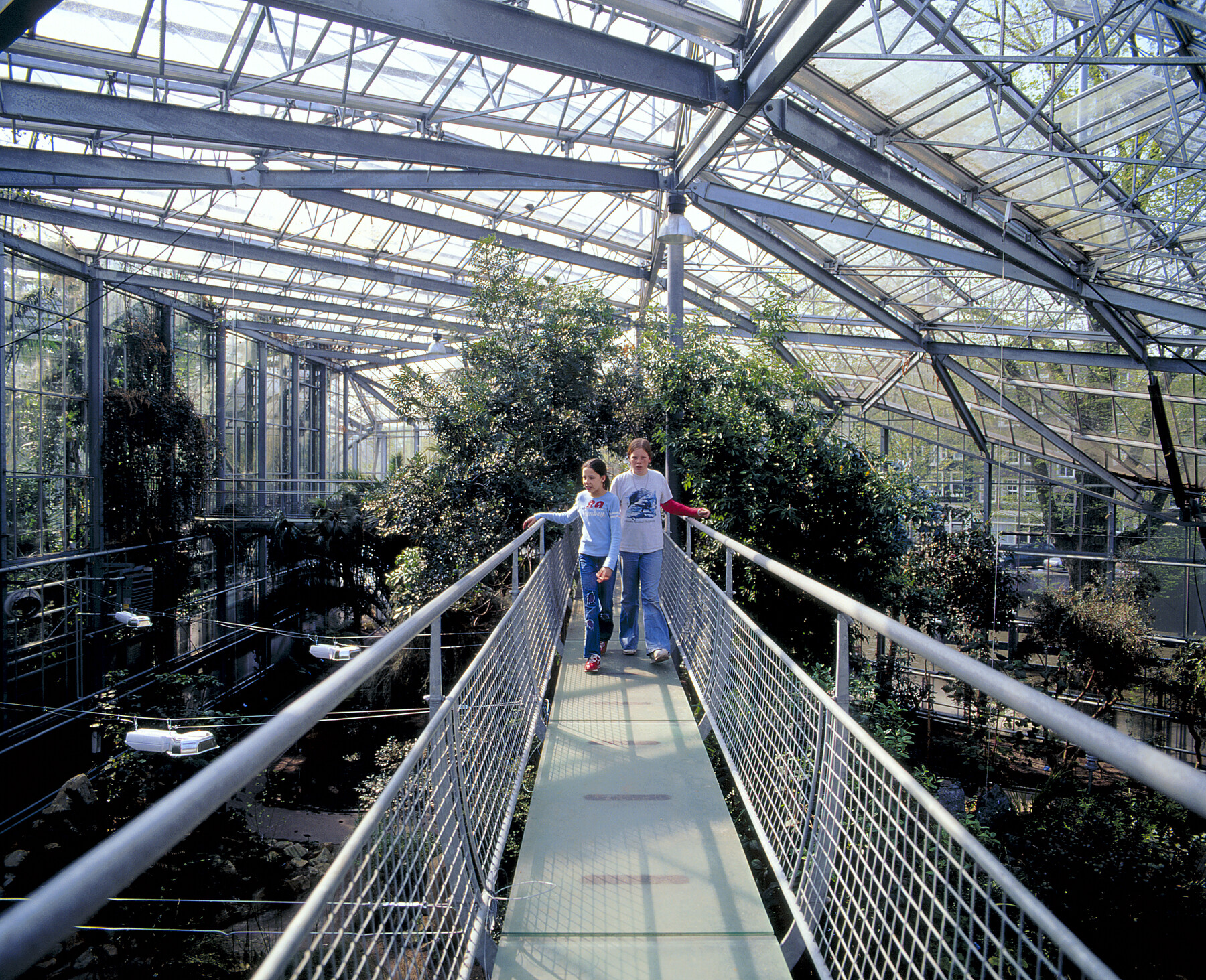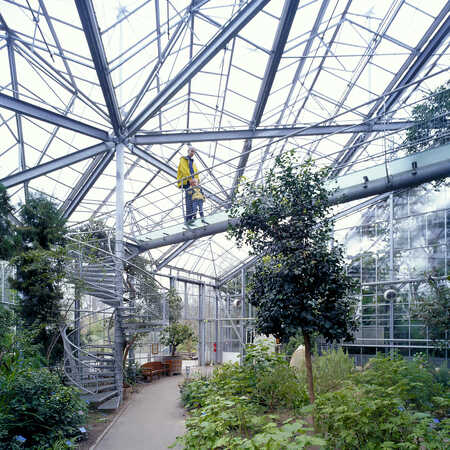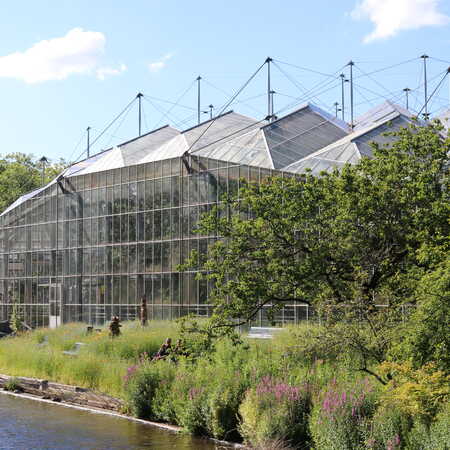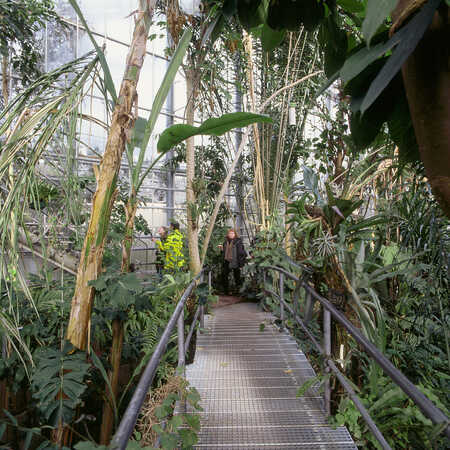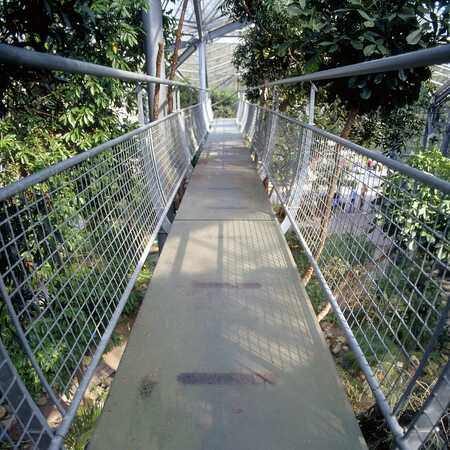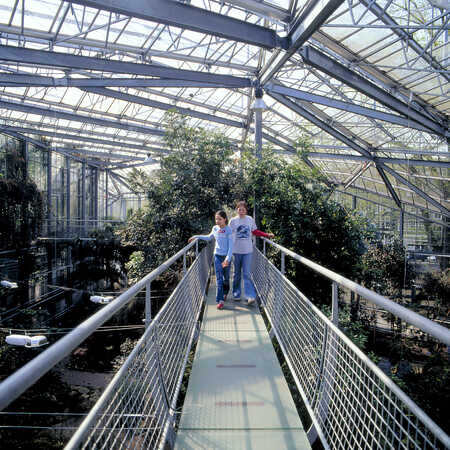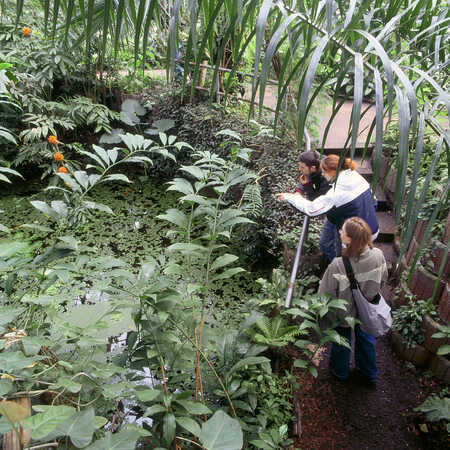Conceiving this design ZJA worked with elements that are frequently used in commercial greenhouses, but the constructive principles applied are radically different. The glasshouse has a height ranging from 4 to 11 meters and is divided into three climate zones (tropical, subtropical and desert) and covers an area of 1.500 square meters. It is supported by an exoskeleton of steel elements. The columns work as pressure rods, with slimmer rods putting the entire construction under pretension. This tensegrity principle enables a design that is light and allows for a large variety of shapes and a maximum access of daylight. The walls separating the climate zones are also made of glass. In that way an impressive free space is created where light enters from all directions.
Smart and inviting
The enormous clear surface is created by a smart contemporary structure that miraculously suits the ancient location. The glasshouse of the botanical garden borders a waterway in the old part of Amsterdam, in between Jonas Daniël Meyerplein and the Plantage Middenlaan. All around one finds historical buildings with their characteristic shapes and proportions. They date from the seventeenth to late nineteenth centuries. The curved Iines, the colour of the bricks and stones, their height and relationship to the street, it all makes up the atmosphere where the glasshouse of the botanical garden should blend into. The water of the river and the canal reflects the light and provides extra spaciousness.
The glasshouse’s design, as for lay out and silhouette, is adapted to the location and its historical nature. The shape of the glasshouse changes in height and follows the silhouette of the facades on the canal. It also shields off an interior garden, just like the houses across the water do. On the garden side the glasshouse in lower, to let the sun in and create a more intimate setting.
A special feature is the footbridge built with a glass floor that offers the visitors of the glasshouse a birds-eye view. This distinctive element emphasizes the idea behind this ZJA design: to create a pleasant, instructive and engaging spatial experience with smart and minimal means. The footbridge gives an extra opportunity to experience this very special environment and the closeness of the many exotic plants.
Now over 30 years later, the present imposes new demands. With a mayor renovation, the Hortus aims to create a fully sustainable greenhouse. Not only as optimal shelter for the plant collection but also as a future-proof location that visually tells the story of biodiversity. As in 1993, ZJA provided the architectural design.
Take a look at our design for the renovation of the Three Climate Greenhouse
Gallery
Architect: ZJA
Client: Stichting interimbeheer Hortus Botanicus Amsterdam
Engineering: ABT Velp
Design: 1990-1992
Inauguration: 1993
Project: 0025
Related
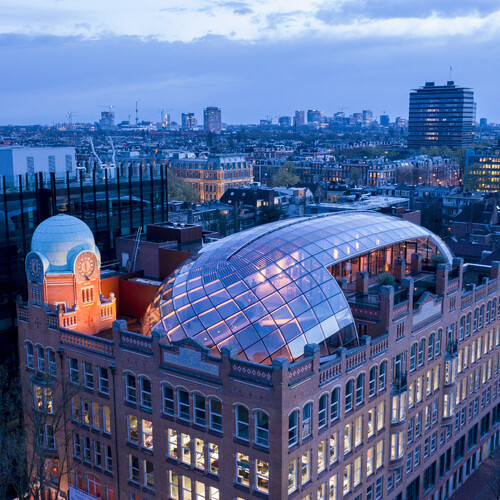
Diamond Exchange, Capital C Amsterdam, Amsterdam
New life for a monument
Historically an exchange is the meeting place of markets and people, goods and ideas, and that is how the renewed Diamond Exchange meets…
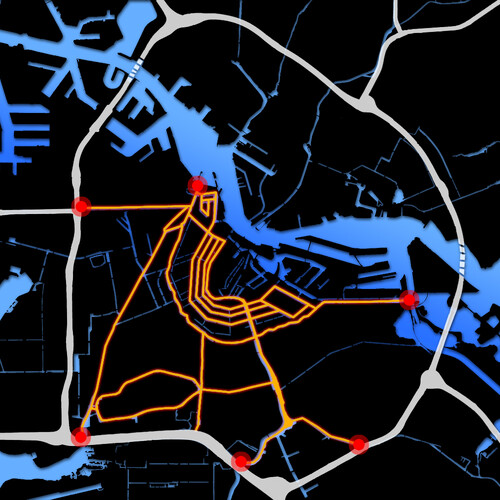
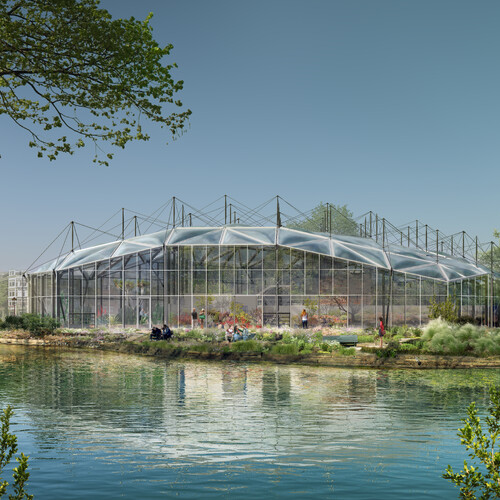
Renovation Climate Greenhouse Hortus Botanicus Amsterdam
The eye-catcher of the Amsterdam Hortus Botanicus was designed in the early 1990s by architectural studio ZJA, as a contemporary structure…
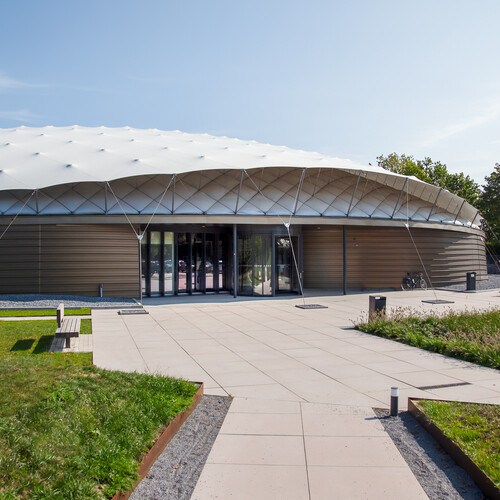
Freedom Museum, Groesbeek
Parachute in the landscape
Amid the green hills rises the impressive white dome of the new Freedom Museum in Groesbeek. The museum is shaped like a giant parachute…
